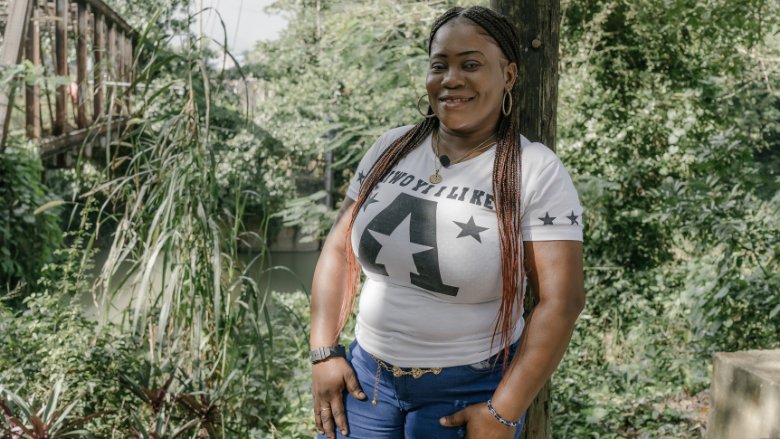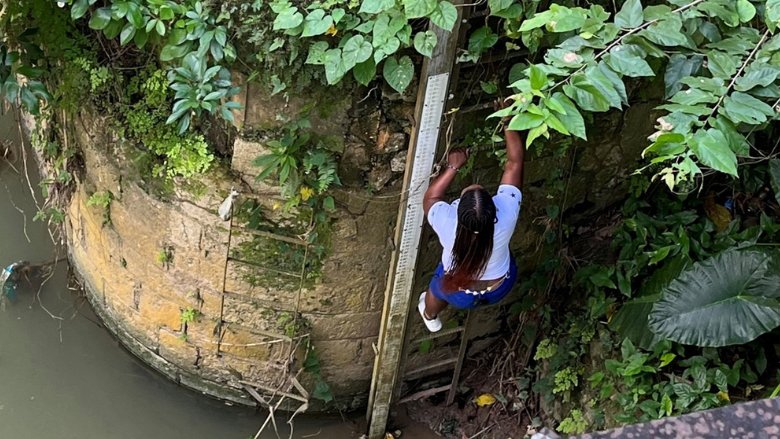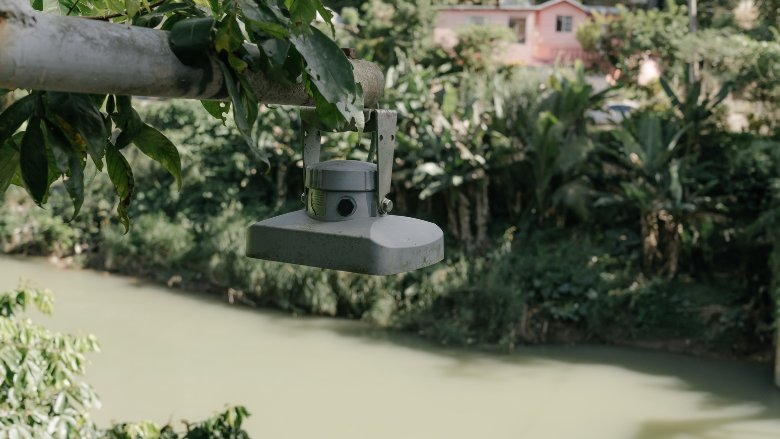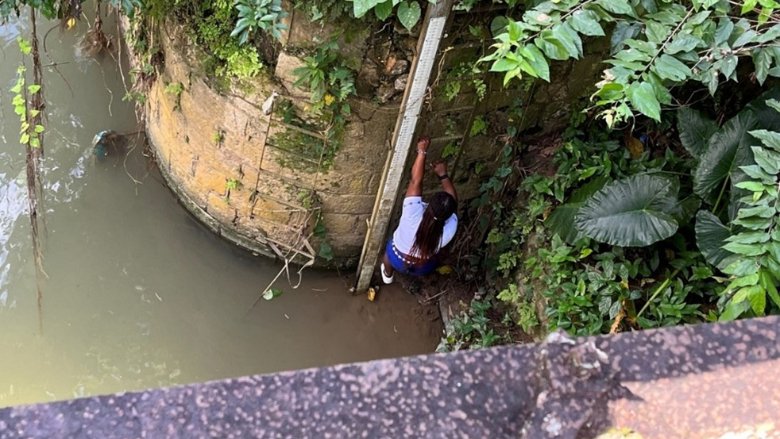Those familiar with the Bog Walk Gorge in Jamaica understand the fear surrounding its notoriety. For many, the idea of even driving pass the river is scary - let alone standing inches away - but not for Kerry Ann Wright.
Kerry Ann is the Community Observer for the Water Resources Authority (WRA) in Kent Village, Bog Walk, Jamaica. Her role involves the daily monitoring of water levels in the Rio Cobre River which meanders through the Gorge. While it sounds pretty simple, being the Community Observer is risky and takes a lot of courage. To monitor the water levels, she has to: walk to the edge of the bridge and climb down a rusty old ladder hanging over the river which averages 7ft, almost doubling her less than 5ft frame. Given any indication that the water level of the river has increased, Kerry Ann hastily alerts officials.
¡°Over the past years, I have witnessed a lot of people being trapped in the Gorge, cars being washed away, and people¡¯s lives being lost. [The flooding of the Gorge] can put residents¡¯ lives in danger. Sometimes people get trapped on the other side, so it is important for them to know when there has been a flood and they are out of the area, they know not to enter,¡± Kerry Ann told a World Bank team visiting the project site.
Due to climate change, Caribbean countries like Jamaica are increasingly faced with the threat of hurricanes, tropical storms, and heavy rainfall which often leaves communities flooded and lives and livelihoods in danger. These communities are often are not equipped with the right monitoring tools and operate with aged equipment, that is neither accurate nor timely. New technology, like the early warning system implemented in the Bog Walk Gorge, can help to mitigate the effects of extreme weather and reduce the impact of floods on communities within the region. As such, the Improving Climate Data and Information Management Project for Jamaica proved timely, as it enlisted community members, like Kerry Ann, to assist with monitoring water levels in the river and installed a rain gauge.
Jamaica, which had the Rio Cobre Early Warning System already in place, has benefitted from an upgrade of the system. Prior to the upgrade, the system - which used radio frequency - gave many faulty warnings, prompting authorities to act on inaccurate information. It also meant that the people of Kent Village were constantly in danger, since the river was not being monitored continuously and flooding could go undetected, especially during the early hours of the day. The upgraded system, based on the GSM network, is more reliable and provides accurate data readings.
Though she is still conducting her water level checks twice a day - as rain and flooding in other areas could still cause the river to rise - Kerry Ann is grateful for the upgraded early warning system which has made it safer for residents of her community. As part of the project, gates have been installed at strategic locations along the Gorge to help the authorities avert danger in the event of flooding.
¡°The early warning system is very important, and I am glad they came up with that idea because if they weren¡¯t here, a lot of lives would be lost over the past years. Since they have been here, I cannot recall any lives being lost,¡± Kerry Ann said.
Admittedly, having to go down a rusty old bridge twice a day to check rising water levels in the notorious Rio Cobre River is not the most appealing job to an average Jamaican, however, Kerry Ann does not mind it. The mere fact that this job allows her the possibility of saving lives and keeping her fellow community members safe is what is of the utmost importance to her. While the job has been declined by many, Kerry Ann wears the title of Community Observer most proudly.




